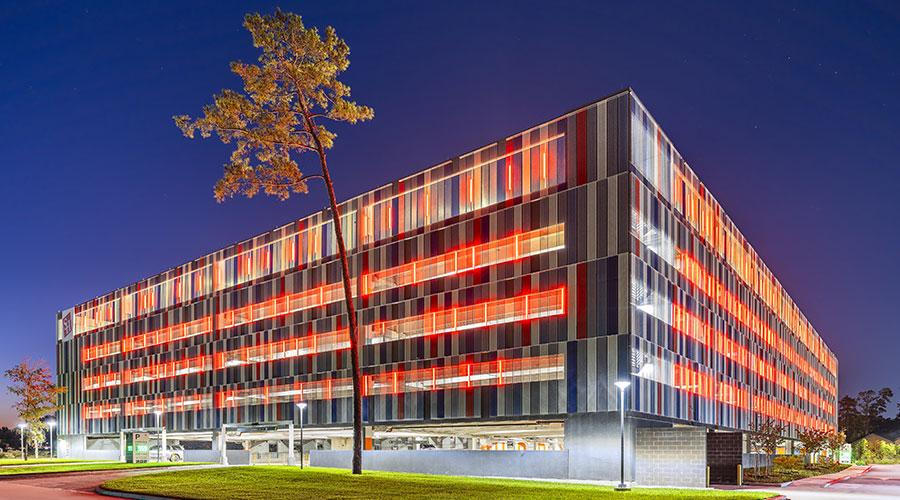Occupancy Sensors Eliminate Energy Waste
A building’s lights might go on in the morning, but they often do not need to stay on all day. At any given time, lights might be on in an unoccupied room. In fact, studies suggest workers are not in their offices 30-70 percent of the time during work hours.
To eliminate this energy waste, most energy codes require some way to automatically shut off lights when not in use, either based on a schedule or occupancy.
Occupancy sensors are lighting controls that automatically turn off lights in unoccupied spaces, reducing energy costs by reducing energy waste. Turning off indoor and outdoor lighting also minimizes light pollution.
Many occupancy sensors also can turn on lights automatically when a space is occupied, providing low-cost security for indoor and outdoor spaces. These features make sensors a staple in sustainable buildings that comply with energy codes.
Occupancy sensors are best suited for projects that require granular control, which can be difficult to achieve economically using scheduling. They also are suited for areas that are intermittently occupied, meaning unoccupied for two hours or more per day and where lights typically remain on when the space is unoccupied.
Examples of appropriate applications include offices, classrooms, copy rooms, restrooms, storage areas, conference rooms, warehouses, break rooms, corridors, and filing areas.
Scheduling is another code-compliant strategy for achieving automatic shutoff. The strategy usually entails the use of an intelligent control panel or intelligent lighting system. Scheduling is appropriate for public spaces, such as lobbies, where occupancy is predictable and based on a schedule, or where lights must remain on, even when the space is unoccupied.
Many buildings require both strategies to achieve code compliance economically and to achieve the best results with automatic shutoff.
Managers who incorporate the following five steps into their overall lighting strategy can help lighting-control technology deliver benefits to the organization.
Related Topics:















